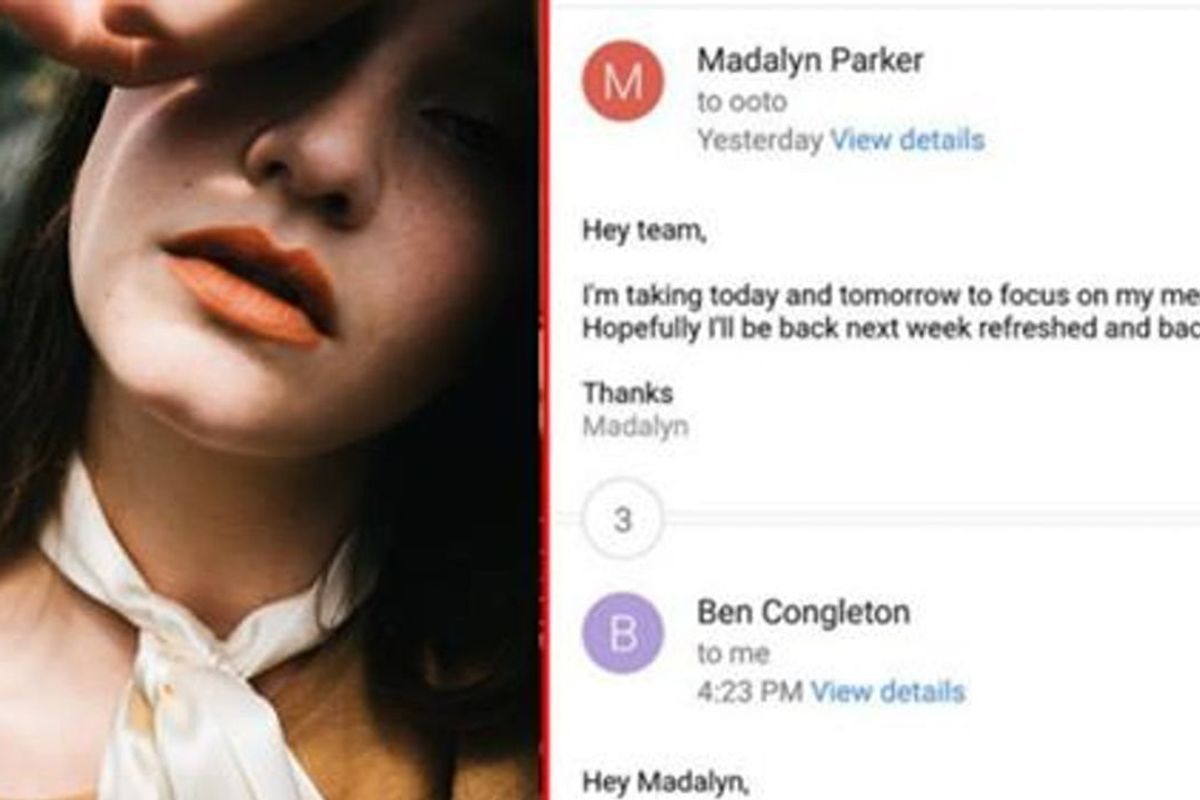Students are encouraged to fail in this brilliant business program for kids.
In these schools, if you can dream it, you really can be it.
"Dream big" and "you can be anything you want to be" — phrases like these often show up on school posters, but they're much easier said than done.
Kids need actual real-world experience to get out there and have a fighting chance in an already saturated and competitive job market.
We live in an age when entrepreneurs rule; this is especially true today, when there are fewer and fewer direct paths to careers, and many require in-field experience and degrees.
For students facing real obstacles like hunger, homelessness, and living as newly arrived immigrants, those things are often out of reach.
For example, one student named Natalie had previously been kicked out of school, but thanks to BUILD, a program that brings entrepreneurs into classrooms to help students develop real-world business plans to pursue after graduation, she became her high school's valedictorian and got her college degree.

Now she works at BUILD helping other kids burst through their own glass ceilings.
It just goes to show almost any limitation can be overcome given the right tools.
BUILD's four-year program teaches the basics of small-business building through project-based learning, and students get hands-on experience working with companies that appeal to their interests while growing their "mock business."
Since the programs are so hands-on, BUILD teachers are finding they've significantly increased their students' engagement and confidence levels.
Students winning awards for their BUILD presentations.
"I have had teams learn how to make books, headbands, use a 3D printer and the software required to design, work metal, and many other small skills," writes Nick Ford, a teacher at Columbia Heights Education Campus in Washington, D.C. "I left a lot of that learning up to them. That is why BUILD is amazing. The students pick their path, and I help them find what they need in order to walk it."
The best part: The possibilities for what students can create are endless. The only rule is that they must work together to make their dreams realities.
Broome Street Academy students showing off their phone case creation.
A lot of the program's success stems from how it encourages failure, because messing up is a huge part of creating a business.
"The best lessons that have come from my BUILD classroom has been when students have failed or even sensed rejection," writes Reggie Williams, a teacher at the SEED School in D.C. "These moments, however, provide necessary reflection that facilitate growth. Having a culture where failing is not chastised is huge, because it allows students to take risks. However, reflecting is the key."
Williams says it's also helping them be better public speakers — a vital tool in today's business world.
But BUILD doesn't just inspire creative, collaborative thinking. It also helps students with the more practical side of business building: the money.
"A lot is at stake in the process and without funds, they cannot go to the next level," writes Broome Street Academy Dean of School Culture Namrata Patel. "Though all my groups received some funding if not all of the funding they requested, it is a learning experience for them in how to ask for money and to show how it is being used in running their business."
Broome Street students giving a presentation on their business model.
Students are charged with creating elaborate investor pitches for their businesses in order to receive funding and get the green light.
This too is confidence-building — it allows students to lay out the mechanics that ultimately bring a business idea to fruition.
Practicing entrepreneurship in the classroom not only gives students the chance to flex their creative muscles, it shows them they really can achieve anything with the right strategy in place.
As for BUILD teachers, the hardest but most rewarding part is letting go of control.
Broome Street students with their teacher.
Namely, to give students the chance to become leaders. It's easy to instruct, but harder to sit back and watch them "do." Sometimes, that may mean watching them fail — but that's usually when the most significant lessons are learned.
"I lost track of the times I could see that something a student or a group of students was trying wasn't going to work, but I trusted that the learning we could have on the other side was more important, and I was right," explains Ford. "BUILD allows students to try things and learn from them. It's about the journey and what you learn along the way."
Learning through experience when we're out of our comfort zones, while scary, is often the best method. That's the principle behind BUILD and one of the main reasons students are coming out of it with a better sense of themselves, where they want to go in life, and how they're going to get there.



 Tony Trapani received the most important letter of his life, but he didn't see it for 50 years Photo by
Tony Trapani received the most important letter of his life, but he didn't see it for 50 years Photo by  Tony and Samuel didn't waste time thinking about what might have been if he'd seen the letter earlier. Photo by
Tony and Samuel didn't waste time thinking about what might have been if he'd seen the letter earlier. Photo by 
 A teacher in front of her class.Photo by
A teacher in front of her class.Photo by  Students taking a test.via
Students taking a test.via  Students around a computer.via
Students around a computer.via 

 Dean Hoffmann's mugshot.
Dean Hoffmann's mugshot.  Nonverbal cues are often the only safe way a victim can communicate.
Nonverbal cues are often the only safe way a victim can communicate.
 Parker, on the edge of burnout, knew she needed to step away. Photo by
Parker, on the edge of burnout, knew she needed to step away. Photo by  The office is not always the best environment for mental health. Photo by
The office is not always the best environment for mental health. Photo by